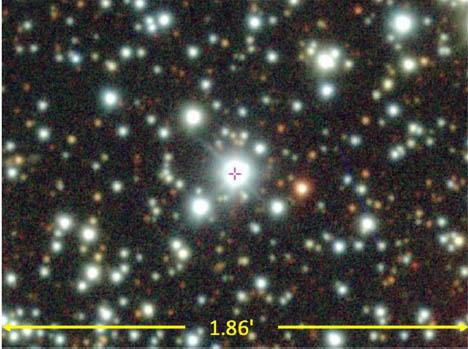Astronomers recently discovered a mysterious, dusty particle that could be causing its host star to fade by up to 75%.
Neither solution can explain how the object is blocking the light from its star: It’s more irregular as well as persistent. The only thing astronomers know for sure about the object, dubbed TIC 400799224, is that it appears to be spewing a lot of dust.
The Transiting Exoplanet Survey Satellite (TESS), which searches for tiny planets near our surrounding stars, discovered TIC 400799224 orbiting a star system 2,300 light-years (725 parsecs) distant.
Using artificial intelligence to comb through TESS data, astronomers discovered TIC 400799224 after its dust cloud caused a sudden reduction in brightness of over 25% over a period of hours, followed by other brightness fluctuations that may be interpreted as an eclipse.
This is frequently a symptom of a dissolving planet or orbiting objects that is breaking down and producing dust, which scientists are interested in learning more about. However, after reviewing six years of data on the enigmatic object, the scientists discovered that something unusual is occurring.
To begin with, TIC 400799224 does not orbit a single star system. A closer look reveals that it’s orbiting a binary star system in which one of the stars pulsates every 19.77 days.
While the periodicity appears to be rather predictable, the item that dims the light is erratic in its shape, depth, and duration, leading the scientists to believe it’s most likely caused by an orbiting body that periodically produces dust clouds. However, it is unclear what that thing is.
It’s also unclear which of the two stars the enigmatic object is orbiting, which leads to another strange aspect of this find: the 25 percent brightness dip was only a small sample of what TIC 400799224 can accomplish.
According to the researchers in The Astronomical Journal, depending on which of the two stars is its true host, the dust the object releases blocks up to 37 percent or 75 percent of the light from its host star.
The researchers have a few leads after analyzing the numbers. They believe the data points to one of the stars being pre-main-sequence, which means it is still gaining mass from its dust and gas envelope, which is commonly in the form of a disc around it.
Similar discoveries in the past have been labelled as ‘disintegrating planets,’ but the team believes the evidence is distinct enough that this isn’t the case here.
The research has been published here.


